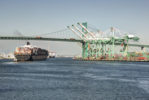
Home » A New Global Rulebook: Here’s What to Watch at UN Climate Talks
A New Global Rulebook: Here’s What to Watch at UN Climate Talks

December 4, 2018
Envoys from almost 200 countries convene this week in Katowice, Poland, for an annual conference on reining in global warming. The meeting organized by the UN is aimed at drawing up a rulebook for implementing the 2015 Paris Agreement, where all countries rich and poor alike pledged to limit fossil fuel emissions.
World leaders arrived Monday for a summit hosted by Polish president Andrzej Duda. Technical negotiators will meet in the following days to work through the nuts and bolts of the deal that will apply after 2020. Energy and finance ministers are expected to show up starting Dec. 10 to turn the progress into decisions. By the weekend of Dec. 14, if the talks go smoothly, the Katowice Rulebook will be adopted.
Here’s what to watch for at the meeting, known in UN jargon as COP24:
The Rulebook
The biggest goal of this year’s climate talks is to transform the Paris pledges into a series of rules to govern how the world reduces its greenhouse gas emissions. Key points of discussion will be how to measure this, how to ensure it’s transparent and comparable across borders and how to verify it through some form of international watchdog organization.
Without hard rules and a credible way to enforce them, the Paris agreement is not likely to have a real large-scale impact. The end result of this conference will show whether the world can come together to agree on a solution or if politics will bar progress on an issue where time is paramount.
Climate Finance
Developing countries are pushing for financial aid from industrialized nations, saying that they have contributed much less to global warming and pollution and should not bear the same weight of responsibility. Richer industrial nations in 2009 committed to funnel $100bn per year of climate-related projects to poorer countries by 2020. In 2016, those payments amounted to $70bn, according to a report by a United Nations group.
China and India are typically the loudest voices advocating for closing this gap as well as for boosting technology transfers. There will also be discussions around how to measure climate finance flows and how to best administer these contributions, whether they should go through the Green Climate Fund, development banks or be handled bilaterally.
The U.S. Delegation
The U.S. delegation will be closely scrutinized for signals on what the current administration plans to do about the Paris Agreement. President Donald Trump has said that he would pull out of the deal, but has also said that he would reconsider this if the pact can be made more favorable to the U.S. economy. This conference will determine what the deal will actually look like, so there’s a chance that the U.S. could reassess its position.
The country is also planning side events to promote coal in an extension of the administration’s agenda to advocate for the fossil fuel. Last year, it announced an initiative known as the Clean Coal Alliance, which is seeking to foster collaboration and research between countries to advance higher efficiency coal-burning technologies.
Carbon Markets
There may be some advances in talks on carbon markets as well. The United Nations is currently in early stages of setting up an international market for carbon credit trading, known as the Sustainable Development Mechanism. Discussions will center on how to fit existing carbon markets such as the European Emissions Trading System into the post-2020 Paris era, how to make national carbon credits and reduction targets comparable across markets and ideas on how to raise transparency.
Carbon markets are one way to make cutting greenhouse gas emissions more affordable. They give polluters the option of buying carbon credits rather than undertaking green projects. These credits are created by companies that build green power or energy efficiency projects which avoid emitting CO2.
Adaptation
Countries already feeling the effects of climate change, such as small Pacific islands, will be the loudest voices in the discussions on adaptation to a warmer world. There will be questions around who should pay for defensive infrastructure such as seawalls and what to do with the first wave of climate refugees, as rising water levels swallow up inhabited land.
How to protect against intensifying weather patterns such as perilous droughts, floods and storms are also likely to talked about, particularly by countries such as India, the Philippines and South Africa, which have had to deal with recent catastrophes.
RELATED CONTENT
RELATED VIDEOS
Subscribe to our Daily Newsletter!
Timely, incisive articles delivered directly to your inbox.
Popular Stories

2024 Supply Chain Management Resource Guide: There's Only One Way Off a Burning Platform
VIEW THE LATEST ISSUECase Studies
-
Recycled Tagging Fasteners: Small Changes Make a Big Impact
-

Enhancing High-Value Electronics Shipment Security with Tive's Real-Time Tracking
-

Moving Robots Site-to-Site
-
JLL Finds Perfect Warehouse Location, Leading to $15M Grant for Startup
-
Robots Speed Fulfillment to Help Apparel Company Scale for Growth



